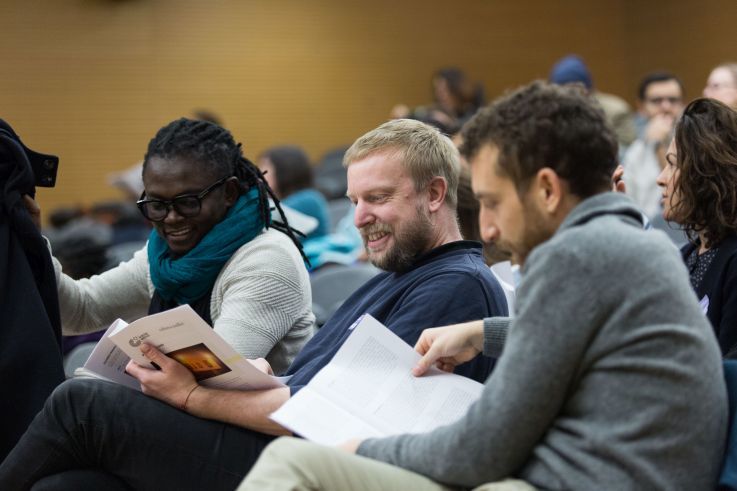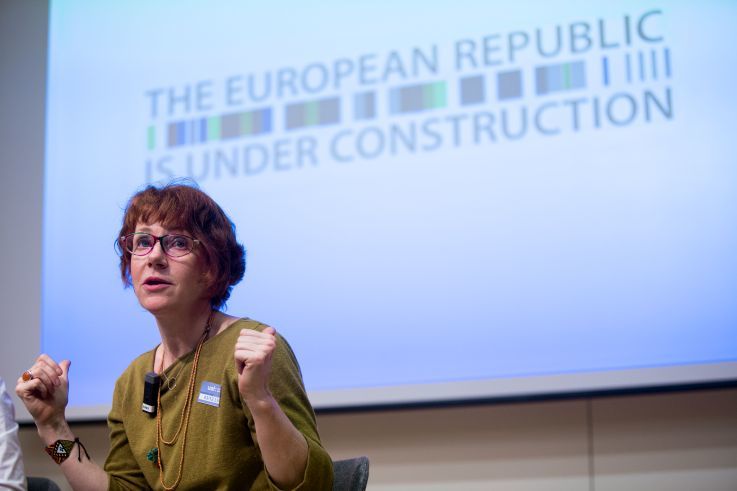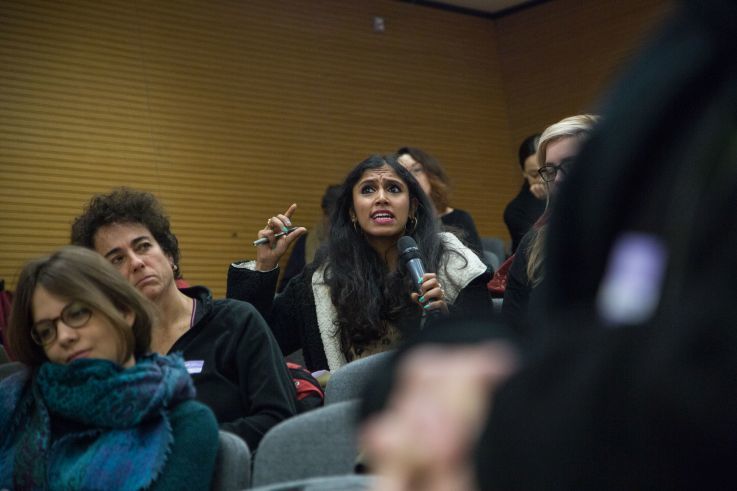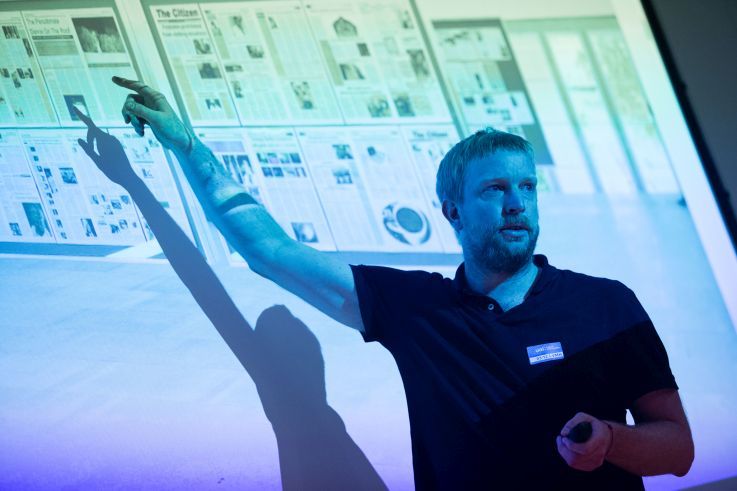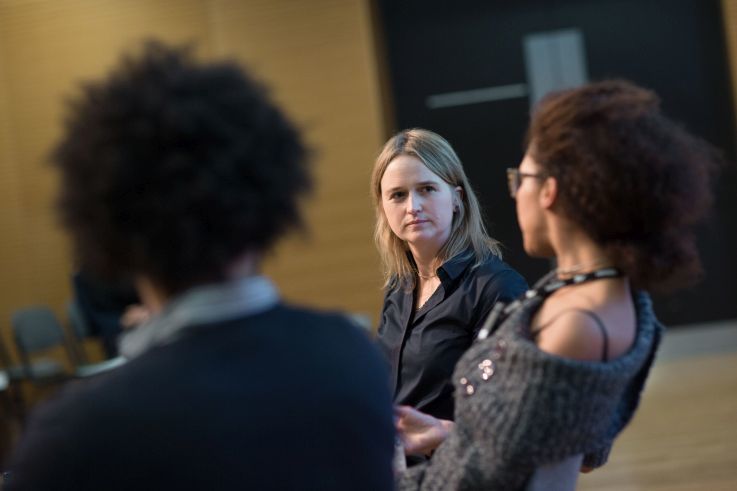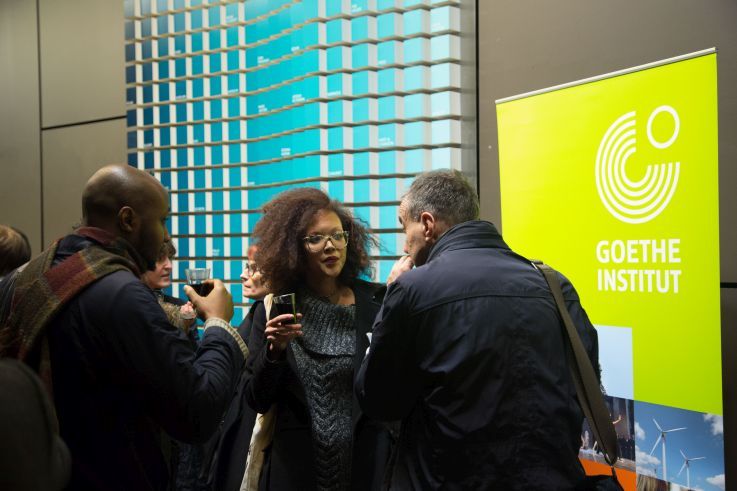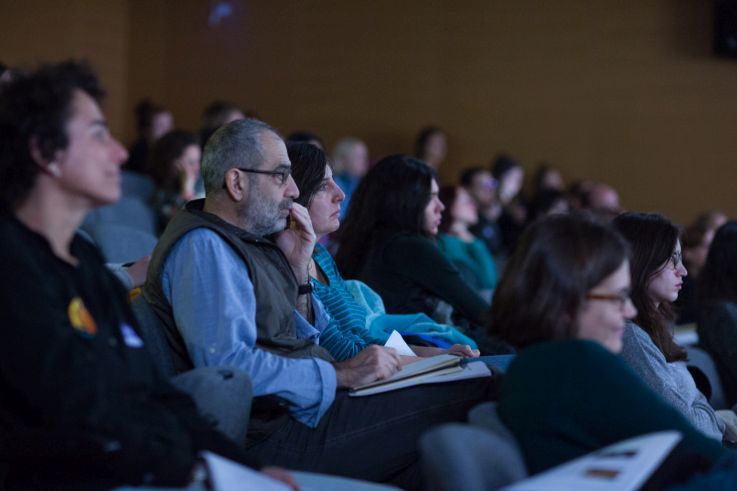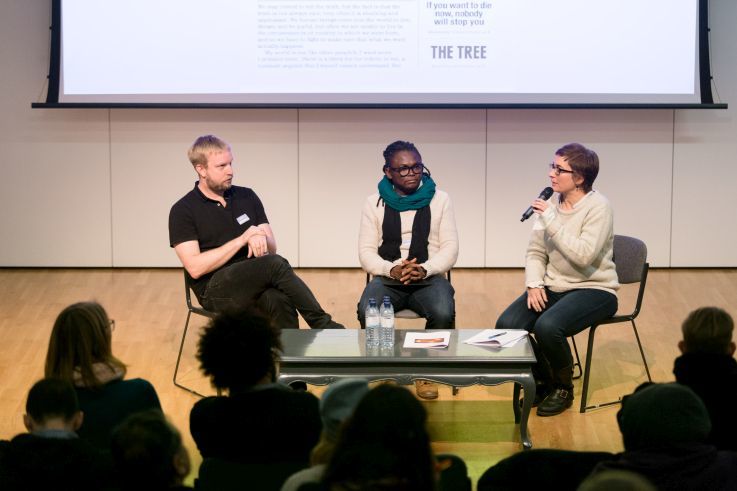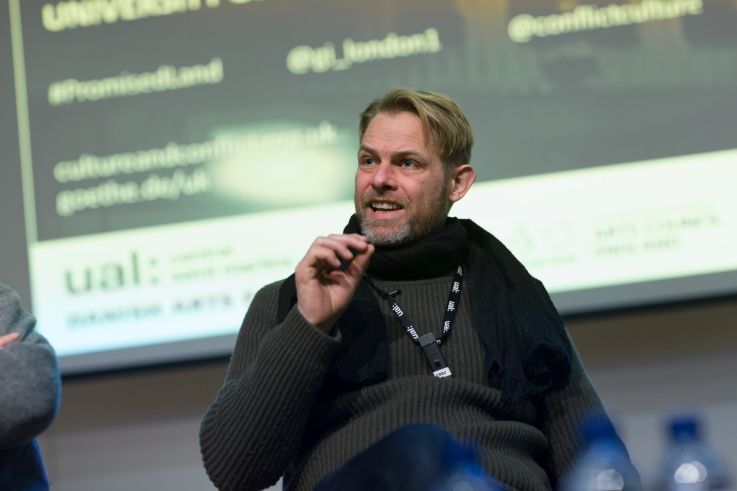Society and Current Affairs
The European Project - Promised Land No More?
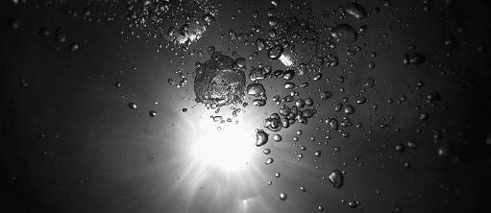
The shifts in current European politics are shaking the very core of the European project. Artists, film-makers, writers, academics, and cultural and political commentators discuss and respond to the rise of nationalist, populist, and Eurosceptic movements.
Promised Land – One-Day Symposium, 3 December 2016, Central Saint Martins, London, UK
The shifts in current European politics, particularly the rise of nationalist, populist, and Eurosceptic movements, are shaking the very core of the European project, fundamentally challenging its ideals.
The situation is further charged by recent pivotal events in international politics, and exacerbated by the present migratory crises along European borders. What once represented a ‘Promised Land’ for so many, now offers a very different reality. Britain has voted to leave the EU, and countries such as Poland and Hungary are now led by extreme right-wing governments. Forthcoming elections in Austria, Italy, France and Germany may well follow this trend of a move to the right. European stability, expansion and indeed European values seem like yesterday’s dream.
Promised Land, through a series of events, screenings and a commission, raises debate about the challenges, responsibilities and consequences we now face.
These challenges in Europe must be considered in the context of wider international issues: continued violent conflict in many parts of the world, most visibly in the Middle East, and central and east Africa; widespread poverty; the unprecedented gulf between rich and poor; and ecological disaster. New technologies, it seems, cannot keep ahead of human suffering and inequality.
The symposium explored these and other issues through the work and ideas of artists, film-makers, writers, academics, and cultural and political commentators. The three core themes for the day were: ‘Europe from outside and within’, ‘Displacement’, and ‘Home and Belonging’. Bringing these voices together created an opportunity to exchange ideas, seek common ground, to disagree, and ask questions.
What are the ramifications of these political shifts in Europe for art and artists? What insights and ideas are artists bringing, within Europe and beyond? What can the cultural community do to challenge or address these troubling political changes? What are the realities of today’s ‘Promised Land’? And can we imagine a new Promised Land?
The day began with a screening of Christoph Schlingensief’s Foreigners Out!, a work from 2002 which documented the response to Schlingensief’s shocking installation of a refugee compound outside the Vienna Opera House based on the Big Brother television series. The ensuing public outrage and media fracas served Schlingensief’s goal to reveal the dangerous rhetorical strategies of the Austrian nationalist party. The documentary continues to be salient today as tightening borders coincide with the rise of the far right.
Seeing the root of Europe’s problems in nationalist thinking, in her keynote Professor Ulrike Guérot spoke in favour of establishing an inclusive, de-territorialised European Republic. Europe can only be fixed, she stipulated, by abolishing the current nation-state paradigm. Disregarding regional nuances including the urban-rural income divide, the EU pits countries against each other based on economic performance. To truly succeed, Europe can no longer be tethered to its market, nor to the political needs of its individual states. Instead, Guérot proposes that sovereignty be returned to its citizens through the creation of a true republic: a political system which allows for equal social, financial, and legal representation, featuring a House of Representatives elected by individuals.
Europe from outside and within
Emeka Okereke, founder of Invisible Borders and the first artist to speak, levelled a critique against the idea of Europe as a bastion of human rights, instead linking the migrant crisis to the “imposed cartographies of colonialism.” Free movement is the key to fundamental rights, Okereke asserted; “without movement, there can be no exchange.” Reflecting on tense or serendipitous encounters from Cameroon to Bosnia-Herzegovina, Okereke considered “how to become, via your presence, an object of useful agitation.”
“We find ourselves at a time where goods, information, and images can move very fast, but it’s becoming increasingly difficult for most people to travel and cross borders” noted the artist Tobias Zielony, whose work at the Venice Biennial 2015 depicted migrant activists in Germany. Documenting their marches, protests, and downtime alike, Zielony revealed the diversity of interests that brought migrant groups to Europe — whether they were fleeing homosexual discrimination (punishable by death) in Uganda, or threats to their lives due to political agitation in Sudan.
Displacement
If Zielony’s photographs aimed to turn the journalistic image of ‘refugees as passive victims’ inside out, Nikolaj Bendix Skykum Larsen’s new audio work Quicksand, commissioned for Promised Land by the Goethe-Institute London and Culture+Conflict, sought to explore refugees’ victimhood more deeply, fictionalising a Western European man’s fraught escape from his country. “I wanted it to be a really unpleasant experience,” said Larsen; by “placing the listener in a horrible situation together with [his] protagonist,” he hoped to invoke Western empathies towards the physical and psychological traumas of those undertaking dangerous journeys by sea.
“In Europe’s Lampedusa(s), there is the projection of an invasion of the European Union that is simply not taking place”, asserted Dr. Giacomo Orsini in his lecture, Promised Land for whom? In his research, he found that 80-90% of those making an unauthorised border crossing into Europe are asylum seekers with a legal right to enter, while the vast majority of people living irregularly in the European Union entered with a regular visa and subsequently overstayed it. “It’s an appealing discourse,” he continued. “The obsession with an imagined invasion misrepresents what actually happens at the border, while there’s scarce interest for empirical data. The EU only hosts 6% of the world’s refugees — and the idea of Europe as a promised land where everyone aspires to come indicates a new Eurocentrism.”
In her lecture on The Art of Migration, Nanna Heidenreich rooted today’s critical migration thinking in the globalisation discourse of the 1990s. “Today’s crisis is not one of migration but of the European project,” said Heidenreich, pointing out that large-scale movements of people across the globe have occurred across history. Migration, she urged, ought not to be considered marginal; instead, it ought to be seen as a movement at the very centre of society.
Heidenreich critiqued the connection between art and activism, seeing the two as deeply interconnected yet ultimately unwilling to negotiate on each other’s terms. Yet the three artists following demonstrated a sensitivity often missed in political discourse about immigration and the right to live where one wishes. Accent Elimination (2005), a three-channel video by Nina Katchadourian, saw the artist and her parents read through a script about the Katchadourians’ origins first in their own accents, and then in each other’s, working with an “accent coach”, With humour it showed the differences in how speech is constructed across cultures (the individuated words of Armenian, versus the American’s near-slurred flow), and how simply by changing an accent stereotypes are undermined.
Home and Belonging
Artist Bisan Abu Eisheh spoke about his participation in a project in southern Italy, highlighting not only success but the importance of analysing failure — especially when working internationally. In this case, despite being Palestinian, the antagonism that was prompted by running workshops in English in another country.
To conclude the day, Phoebe Boswell delivered a narrative about her time at a residency in Gothenburg. “There’s this thing about drawing which allows you to ‘physicalise’ empathy,” she said, clicking through images she had drawn of daily life in this highly segregated Swedish city. In doing so, she described the many minute feelings of affinity and of isolation, referencing James Baldwin’s Stranger in the Village to describe differing registers of alienation — what it means to feel welcomed, versus an outsider, and how those distinctions are often blurred.
“When home can’t be a physical place, it becomes people, your actions, your activities. That can exist anywhere,” she continued. “Through my work, I find ways to go ‘home’. That ‘home’ is definitely not a place, but a feeling of understanding something better.”
#PromisedLand
This Symposium was presented by Goethe-Institut London (@gi_london1) and Culture+Conflict (@ConflictCulture ) in collaboration with Central Saint Martins.
© Written by Alex Quicho, 5 December 2016
